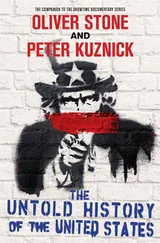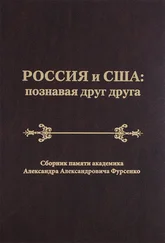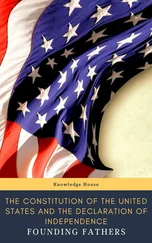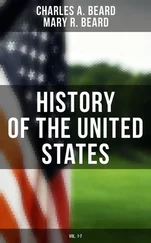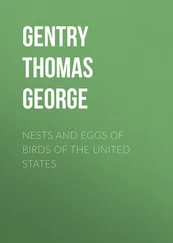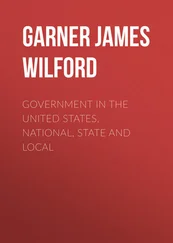In 1912, Francisco Madero’s government had signed the Hague Convention (though Mexico would not ratify the treaty until 1925). In part this was done because the still-shaky regime felt the need to align itself with the international movement being promoted principally by the United States. But in truth Mexico had preceded the U.S. on the road to regulatory regimes and was way ahead of it in its opposition to marijuana.
The issue was put aside in the ensuing whirlwind of revolutionary combat, but once Carranza came to power, restrictionists took a further step. Determined to restore political order, Carranza convoked a Constitutional Convention, which opened in the city of Querétaro in December 1916. Battles between relatively moderate Carranza forces, and radical younger turks seeking social and economic as well as political change, were for the most part won by the radicals, with key provisions drastically curtailing the power of the Catholic Church, laying the basis for major land reform, establishing national rights to subsoil minerals, expanding lay education, and creating a powerful executive branch.
There was, however, little disagreement about drug policy. In January 1917, Brigadier General José María Rodríguez, personal physician of Carranza, argued passionately that Mexico’s position in the “competition of nations” was imperiled because the Mexican “race” had become “infirm” and “degenerated” under Porfirian rule. Some delegates even charged the dictatorship had sought to stupefy and distract the populace through drink and drugs, gambling and prostitution. Stern revolutionary elites associated alcoholism, opium addiction, and marijuana consumption with lower-class illiterates and (mistakenly) with indigenous Indians—“backward” social sectors. Drugs were perceived as obstacles to forging a new model citizenry, one that could build a modern, progressive, and civilized Mexican nation.
Rodríguez proposed an amendment to the Constitution that would give Congress the power to prohibit the “selling of substances which poison the individual and degenerate the [Mexican] race.” He named alcohol, opium, morphine, ether, cocaine, and marijuana (the latter being “one of the most pernicious manias of our people”). He also urged writing into the revolutionary charter a provision for a federal department of public health, whose recommendations on issues of civic hygiene would have the force of law. This was done; the new Constitution was approved in 1917, and in 1918 the agency was established, with Rodríguez as its head. He now pushed for draconian measures and, during the last days of the Carranza regime, had the department promulgate “Decrees on the Cultivation and Commerce of Products that Degenerate the Race.” These banned the growing of opium and the extraction of its narcotic latex without special permission; banned completely the production and sale of marijuana, nationwide; required drug wholesalers to obtain special permission to import opiates or cocaine; and mandated that such importers sell those drugs only to licensed medical distributors, or to doctors who had received specific permission to receive and prescribe them.
Mexico had declared war on drugs.
Implementation was forestalled by renewed revolutionary chaos, as Generals Álvaro Obregón and Plutarco Elías Calles, among others, took up arms against the Carranza regime. In May 1920, with rebel forces closing in, Carranza left the capital for Veracruz but never made it, having been murdered (or committed suicide) on the way. Obregón was now elected to succeed him, and Mexico entered a period of (again relative) tranquility. In 1923 Obregón peacefully passed the presidential torch to his comrade-in-arms Calles, who during his term in office (1924–1928) resuscitated the delayed assault on illicit substances.
Calles was determined to realize the transformative visions embodied in the Constitution but not yet wholly enacted. In preparation, he had undertaken a 1923 tour of Europe to study contemporary socialist practice. He consulted particularly with German Social Democrats, and also corresponded with Turkey’s Mustafa Kemal Atatürk, who was just then embarking on an analogous program of political, economic, and cultural reforms to transform the former Ottoman Empire into a modern and secular nation-state. In particular, Calles set about ruthlessly enforcing constitutional curtailments of Catholic prerogatives — breaking the Church’s grip on the educational system, and prohibiting religious rituals outside of churches, which themselves became the property of the nation. This sparked a furious resistance by Catholic peasants that spiraled into the ferocious Cristero War (1926–1929) in which seventy thousand to ninety thousand died.
For all his anti-clericalism, Calles sought the moral betterment of the Mexican people. As had his Revolutionary predecessors, he saw combating drug use as one way to accomplish this. Alcoholism was his original bête noire. As governor of Sonora he had prohibited by decree the importation, manufacture, or sale of intoxicating beverages. Violators were to be punished with five years in prison, though he underscored his determination by summarily executing one poor drunkard. As president, he lit into narcotics.
In February 1925 the New York Times reported, in a story headlined “Calles Orders Drug War,” that the new president had announced he would “punish all drug handlers and users of drugs in Mexico.” He had, moreover, fired policemen who “were recently implicated in the drug traffic through protecting importers.” Follow-up stories hailed Calles’ announcement that he would “clean out” traffickers from border towns, shut down retail outlets in Mexico City, and go after transshipments from Asia and Europe. (Opium and heroin arrived to Acapulco and other west coast ports on Japanese vessels, sometimes hidden inside fish, or were transported to east coast ports like Tampico and Veracruz from Germany, Belgium, and France.) The government also assaulted opium growers — destroying several hundred acres of Chinese-cultivated poppies in the states of Nayarit and Durango — and went after pot producers too.
“Mexico Bans Marihuana,” declared a December 1925 New York Times story recounting industrious efforts by public health department inspectors to arrest farmers and incinerate their crops. Marijuana leaves, the paper explained, retailing an emerging north-of-the-Río-Bravo version of Mexico’s conventional wisdom, “produce murderous delirium” that often drives addicts insane, adding: “Scientists say its effects are perhaps more terrible than those of any intoxicant or drug.” In 1931, Luis Astorga notes, drug consumption and trafficking were defined as federal crimes.



Calles also set in motion momentous changes in the nation’s political structure that would greatly impact once and future drug wars, albeit in contradictory ways. In 1928 he proposed ending caudillismo —the seemingly endless battle for preeminence between rival generals — by bringing all factions together inside one capacious political entity, the PNR ( Partido Nacional Revolucionario or National Revolutionary Party). Established the following year, the PNR solved the vexing problem of presidential succession by allowing the outgoing president, in consultation with other party chieftains, to choose the incoming one. The procedure became known as el dedazo —“the tap of the finger”—with the announcement serving as a sort of secular Annunciation. The term of office was changed from four to six years (a period that became known as the sexenio ). Reelection was strictly prohibited, thus barring any replay of Porfirian-style “elective” dictatorship.
Читать дальше


